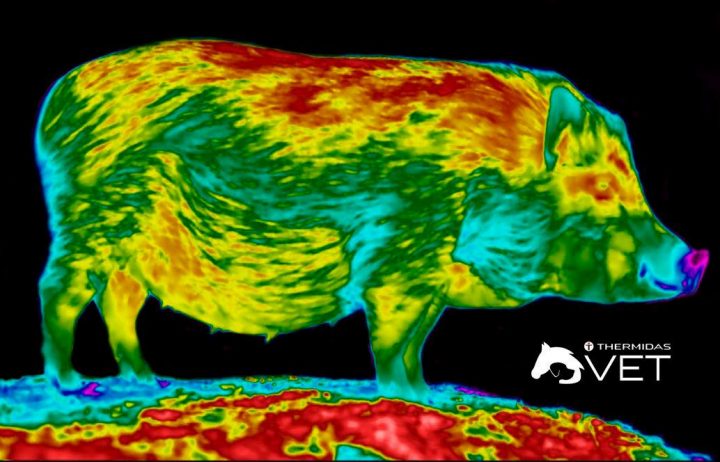Thermal imaging can be used to quickly and reliably detect changes in muscular, vascular, skeletal, and nervous systems.
In thermal image analysis, asymmetries that meet the diagnostic criteria are examined in order to locate possible issues quickly and reliably. On its own, thermography may not be enough for reaching a conclusive diagnosis. However, it may critically speed up the detection of injuries and inflammations thus leading to earlier and more accurate treatment.
Thermography reveals even the tiniest abnormalities. Early detection means quicker treatment, which in turn often translates into lower treatment costs and shorter recovery. Thermal imaging is a superb tool for early diagnostics, because it may enable the detection of possible problems even weeks before any clinical signs appear.
Diagnostic thermal imaging is a comprehensive and risk-free equine and veterinary method for identifying possible injuries and detecting the areas that should be examined further and treated.
Veterinary thermal imaging is done using thermal cameras with especially high IR resolution that can detect temperature variations as low as one-tenth degree Celsius on the animal’s skin surface. We humans can only sense temperature variations that are at least two degrees Celsius. Furthermore, palpation by hand can of course not be used for measuring exact temperature values accurately.

Thermal imaging can be used to quickly and reliably detect changes in muscular, vascular, skeletal and nervous systems.
Thermal imaging graphically shows the animal’s physiological condition by mapping skin surface temperature. The thermal patterns on both sides of a healthy animal are symmetrical (controlled by the sympathetic nervous system). Abnormalities can be detected from differences between skin surface temperature patterns on either side.


Thermidas also provides training for diagnostic thermal imaging. Only trained experts can take trustworthy thermal images and reliably analyze the findings.

Thermidas VET
Polttimonkatu 4
33210 Tampere, Finland